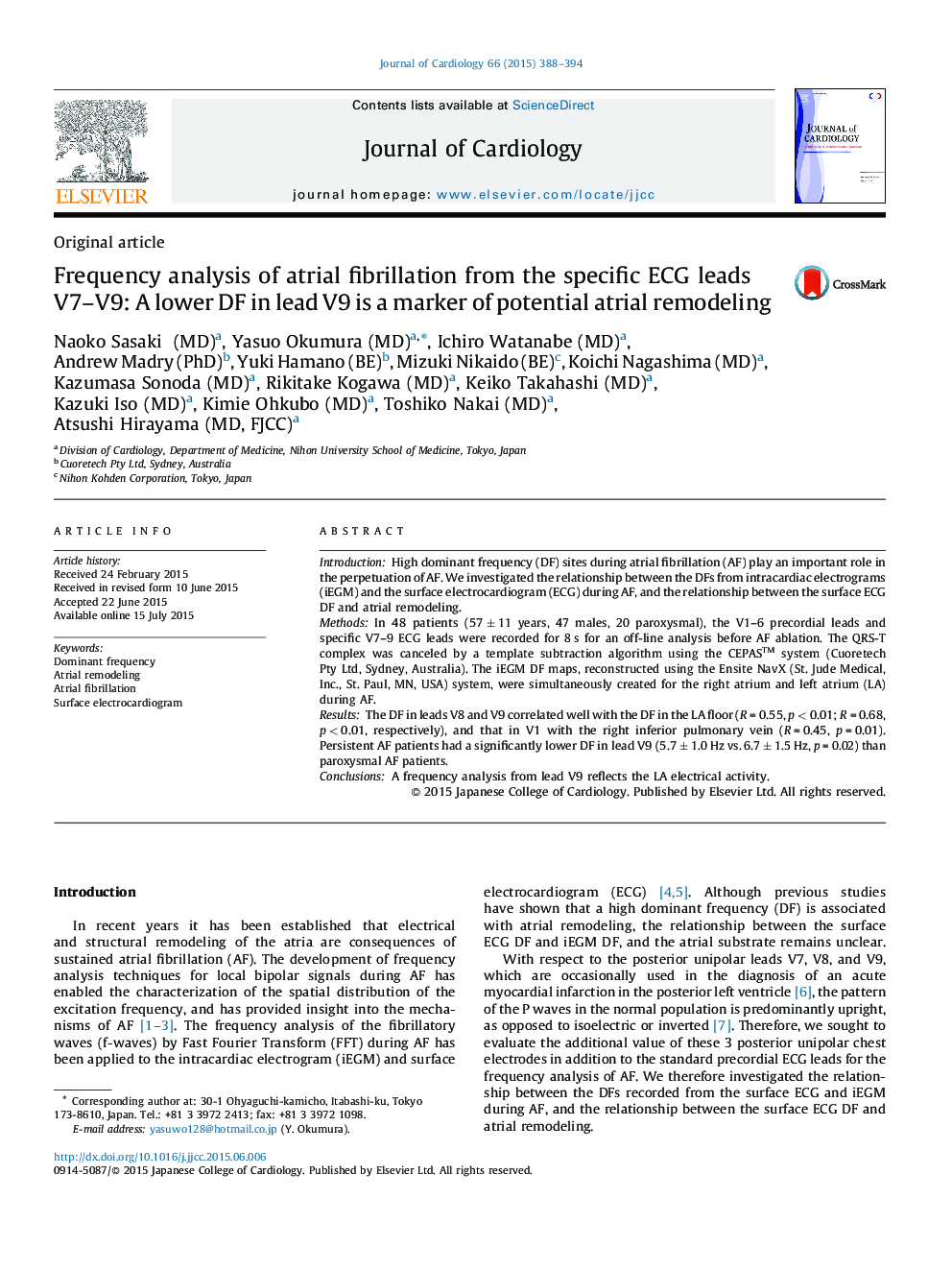| Article ID | Journal | Published Year | Pages | File Type |
|---|---|---|---|---|
| 2962786 | Journal of Cardiology | 2015 | 7 Pages |
IntroductionHigh dominant frequency (DF) sites during atrial fibrillation (AF) play an important role in the perpetuation of AF. We investigated the relationship between the DFs from intracardiac electrograms (iEGM) and the surface electrocardiogram (ECG) during AF, and the relationship between the surface ECG DF and atrial remodeling.MethodsIn 48 patients (57 ± 11 years, 47 males, 20 paroxysmal), the V1–6 precordial leads and specific V7–9 ECG leads were recorded for 8 s for an off-line analysis before AF ablation. The QRS-T complex was canceled by a template subtraction algorithm using the CEPAS™ system (Cuoretech Pty Ltd, Sydney, Australia). The iEGM DF maps, reconstructed using the Ensite NavX (St. Jude Medical, Inc., St. Paul, MN, USA) system, were simultaneously created for the right atrium and left atrium (LA) during AF.ResultsThe DF in leads V8 and V9 correlated well with the DF in the LA floor (R = 0.55, p < 0.01; R = 0.68, p < 0.01, respectively), and that in V1 with the right inferior pulmonary vein (R = 0.45, p = 0.01). Persistent AF patients had a significantly lower DF in lead V9 (5.7 ± 1.0 Hz vs. 6.7 ± 1.5 Hz, p = 0.02) than paroxysmal AF patients.ConclusionsA frequency analysis from lead V9 reflects the LA electrical activity.
